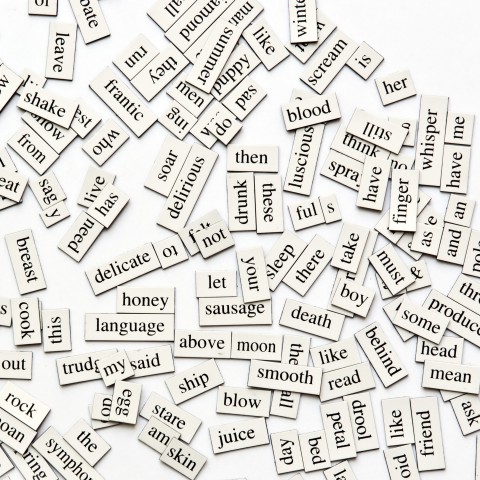
Sentence patterns are important in any language because they allow you to easily express yourself, even with a limited vocabulary. This applies to Hungarian, too. No matter how complicated the language may be, even Hungarian can be easy with the right sentence patterns.
In this article, we’re introducing ten basic Hungarian sentence patterns that are used in everyday Hungarian conversations. If you memorize these simple Hungarian sentence patterns, you’ll be able to generate hundreds of natural sentences and phrases to converse with ease and confidence. Over time, you’ll be able to form any sentence in Hungarian, no matter how complicated.
We’re going to show you Hungarian sentence structures for things like linking two nouns, using adjectives to describe nouns, expressing your needs and desires, asking for permission, and more.
If, by the end of our list, you still have questions about how to make Hungarian sentences, don’t hesitate to reach out to us. At HungarianPod101.com, we aim to help you at all times and ensure that you live up to your own language-learning expectations. However, never forget to practice what you’ve learned after reading any of our articles—practice makes perfect.
Ready to start? Let’s kick it off by revealing how to say “sentence pattern” in Hungarian: mondat minta.
Now let’s get to the good stuff.
 Table of Contents
Table of Contents
- Linking Two Nouns: A is B
- Using Adjectives to Describe Nouns: A is [Adjective]
- Expressing “Want”: I Want (to)…
- Expressing “Need”: I Need (to)… / I Have to …
- Expressing “Like”: I Like (to)…
- Politely Asking Someone to Do Something: Please…
- Asking for Permission: May I…? / Can I…?
- Asking for Information About Something: What is…?
- Asking About Time: When is…?
- Asking About Location or Position: Where is…?
- Conclusion: HungarianPod101.com Helps You Reach Your Full Potential
1. Linking Two Nouns: A is B

The simplest sentence you’ll ever find in any language is the “something is something” structure, using two nouns and an auxiliary verb. However, “A is B” can be considered an imperfect sentence pattern in Hungarian. This is because, in assertive sentences that are in the present tense, there’s no visible auxiliary verb.
You probably already knew that Hungarian tends to leave out words and refer to them with suffixes, so you shouldn’t struggle too much with this. You’ll understand even better after reading some of the examples below.
1- John a bátyám.
English: “John is my brother.”
- “my brother” = bátyám
Here, the auxiliary “is” does not have a Hungarian equivalent. In Hungarian, it’s more like saying “John my brother.”
2- A bátyám egy taxisofőr.
English: “My brother is a taxi driver.”
Like in the previous example, there’s no Hungarian auxiliary for “is.” “My brother” is bátyám still and “taxi” is written the same way in both languages.
Now, about “driver.” Normally, this is vezető in Hungarian, but in this context, sofőr sounds more natural. If you know a little bit of French or use the English word “chauffeur” instead of “driver,” they are indeed the same word. Even their pronunciation is similar.
3- Ez a karóra ajándék volt a feleségemtől.
English: “This watch is a present from my wife.”
Now this one has something new. It’s in the past tense, which means that an auxiliary comes into the picture. In this case, it’s the word volt (“to be”) in the past tense. You might have noticed that the English tense here is present. However, in Hungarian, you have to use the past tense to make it clear that you didn’t just get this watch from your wife, but that this happened sometime in the past.
Now let’s look at a language breakdown:
- “this” = ez
- “watch” = karóra
- “is” (past tense) = volt
- “present” = ajándék
- “my wife” = feleségem
- “from” = -től (suffix)
By the way, if you would like to learn even more relevant vocabulary, you can study our vocabulary lists about Gift Words for the Holiday Season and Hungarian Terms for Family Members!
4- A tanárom nagyszerű előadó.
English: “My teacher is a great lecturer.”
- “my teacher” = tanárom
- “great” = nagyszerű
- “lecturer” = előadó
5- A fiam egy kis ördög.
English: “My son is a little devil.”
- “my son” = fiam
- “a” = egy
- “little” = kis
- “devil” = ördög
Pretty straightforward, huh? Now you already know one of the most basic sentence patterns in Hungarian. Only nine more to go…

2. Using Adjectives to Describe Nouns: A is [Adjective]
Another easy Hungarian sentence pattern is “something is [adjective].” For this, all you need is a basic understanding of how to form sentences in Hungarian (like the one above), and some vocabulary. We recommend our vocabulary list on the 50 Most Common Hungarian Adjectives to get started!
Now, there’s not much difference between the English and Hungarian gradation of adjectives. “Very” is nagyon in Hungarian; you simply put this word before an adjective to give it more weight. Let’s see some examples of this basic Hungarian sentence structure.
1- Gyönyörű vagy.
English: “You are beautiful.”
- “you are” = vagy
- “beautiful” = gyönyörű
2- Nagyon gyönyörű vagy.
English: “You are very beautiful.”
This is the exact same sentence, but “very” is added to the phrase for emphasis.
3- Ez finom.
English: “This is delicious.”
- “this” = ez
- “delicious” = finom
4- Ez nagyon finom.
English: “This is very delicious.”
Now let’s see how to form a question in Hungarian:
5- Vicces lány. / Vicces lány?
English: “She is a funny girl.” / “Is she a funny girl?”
6- Nagyon vicces lány. / Nagyon vicces lány?
English: “She is a very funny girl.” / “Is she a very funny girl?”
As you can see, there’s no inverted sentence pattern in Hungarian. Questions are only indicated by intonation and, in writing, a question mark.
Now, let’s see a more challenging Hungarian sentence using this pattern:
7- A szituáció, amibe tegnap este kevertem magam az exemmel, nagyon kínos volt.
English: “The situation I got myself in yesterday night with my ex was very awkward.”
- “situation” = szituáció
- “yesterday” = tegnap
- “night” = este
- “with my ex” = exemmel (here, we indicated which suffix refers to what; the e after ex is a linking letter and sound)
- “very” = nagyon
- “awkward” = kínos
8- A film, amit tegnap este néztünk, ijesztő volt.
English: “The movie we watched last night was scary.”
- “movie” = film
- “we watched” = néztünk (like above, we indicated which suffix refers to what)
- “yesterday night” = tegnap este
- “scary” = ijesztő
- “was” = volt (the past tense of “to be,” or lenni)

3. Expressing “Want”: I Want (to)…
Now we’re getting to the real deal: expressing emotions, and more specifically, desires—and strong ones, at that. This is because the pattern we’re about to introduce is not the polite “I would like to…” This is “I want.”
It’s important to point out that this polite-impolite contrast also exists in Hungary. If you would like to be more polite, use “I would like (to)…” which is Szeretnék…
We’ll show you some examples for this one at the end of the section, but first, let’s look at “I want (to)…”
1- Ezt akarom.
English: “I want this.”
- “I want” = akarom (the o is a linking letter and sound for easier pronunciation)
- “this” = ez (the t is attached as a suffix for objects)
2- Akarok kérdezni valamit.
English: “I want to ask a question.”
Hungarians do not “ask a question.” They just “ask,” because for them, asking for something (such as a favor), is a completely different word. Therefore, the word “question” isn’t even in the sentence. They just say “I want to ask something.” Even the “something” could be left off.
- “to ask” = kérdezni
- “something” = valamit (here, the t is, again, a suffix for objects; valami is the word for “something” as a subject)
3- Hozzád akarok menni.
English: “I want to marry you.”
4- Jó ember akarok lenni.
English: “I want to be a good man.”
5- Veled akarok menni a bálba.
English: “I want to go to the ball with you.”
In this sentence, let’s say that the emphasis is on “you.” Therefore, I want to go to the ball with you and nobody else. This is important in regard to Hungarian word order.
- “I want” = akarok (o is a linking letter and sound)
- “to go” = menni
- “to the ball” = a bálba
- “with you” = veled
And now, a few examples of more polite Hungarian phrases:
6- Szeretnék rendelni egy salátát.
English: “I would like to order a salad.”
- “I would like to” = szeretnék
- “to order” = rendelni
- “a salad” = egy salátát
Want to learn how to order food in Hungarian? We have you covered!
7- Szeretnék újra találkozni veled.
English: “I would like to meet you again.”
- “I would like to” = szeretnék
- “to meet” = találkozni
- “again” = újra
- “you” = veled (translates to “with you” in English; Hungarians do not meet people, they meet with people)

4. Expressing “Need”: I Need (to)… / I Have to …
Expressing your needs is even more crucial than expressing your desires. Let’s see some simple Hungarian sentences for letting someone know what you need.
1- Szükségem van egy tollra.
English: “I need a pen.”
- “I need” = szükségem van (translates to “I have a need” in English)
- “a pen” = egy toll (-ra is added as a suffix that’s required in an “I need something” phrase)
2- Gyakorolnom kell.
English: “I need to practice.”
“I need to do something” is translated in Hungarian as “it is a must.” Therefore, “I need to practice” is roughly translated as “It is a must that I practice.” Long story short, “need to” is simply kell in Hungarian, and the actual verb gets all the suffixes that refer to, for instance, the number of persons.
3- Találnom kell valakit, akiben bízhatok.
English: “I need to find someone I can trust.”
- “I need to find” = találnom kell
- “someone” = valakit (in the sentence, it has the suffix t because it’s an object; “someone” as a subject is valaki)
4- Most már mennem kell.
English: “I have to go now.”
5- Ki kell mennem a mosdóba.
English: “I have to use the restroom.”
In Hungarian, you do not have to “use” the restroom, you have to “go” there. Thus:
- “I have to go out” = ki kell mennem
- “to the restroom” = a mosdóba

5. Expressing “Like”: I Like (to)…
By the end of this section, you’ll know the typical Hungarian sentence pattern for expressing yourself and the things you like.
1- Kedvellek.
English: “I like you.”
As simple as that. You can say this to anybody you like or fancy. It’s just one word (in Hungarian, at least).
2- Szeretem a kenyeret.
English: “I like bread.”
3- Szeretek főzni.
English: “I like to cook.”
- “I like to do something” = szeretek …-ni
After szeretek (“I like to”), Hungarians use the infinitive form of a verb. In this case, főzni is the Hungarian infinitive of “to cook.”
4- Szeretek fényképezni.
English: “I like to take photos.”
Hungarian people do not “take photos,” they “photograph.” Yes, this is because they have a single word for expressing the act of “taking photos.” That is fényképezni, the infinitive form of the verb.
5- Szeretek könyveket olvasni a jövőről.
English: “I like to read books about the future.”
- “about the future“= a jövőről
6- Szeretem a naplementét tengerpartról nézni.
English: “I like to watch the sunset on the beach.”

6. Politely Asking Someone to Do Something: Please…
This is one of the most useful Hungarian sentence patterns we’ll cover in this article. If you know the right way to ask for someone to do something, it’s almost guaranteed that they’ll do it for you. In this section, we’ll show you how to ask this question politely!
Before we start, let’s look at the word for “please” in Hungarian. When using this word with someone you know, it’s kérlek. If you’re asking a stranger or someone who’s older than you, it’s kérem. Also keep in mind that when addressing strangers or those who are older than you, verbs are to be conjugated in the third person singular form, as opposed to the second person singular.
1- Kérlek, ülj le!
English: “Please sit down.”
2- Kérlek, figyelj rám! / Kérem, figyeljen rám!
English: “Please listen to me.”
- “listen” = figyelj! (informal) / figyeljen! (formal)
- “to me” = rám
3- Kérlek, álljatok sorba! / Kérem, álljanak sorba!
English: “Please stand in line.”
- “stand” (instructing two or more people) = álljatok! (informal) / álljanak! (formal)
- “in line” = sorba
4- Kérlek, add ide a sót! / Kérem, adja ide a sót!
English: “Please pass the salt.”
In Hungarian, “pass” works as “give.” In this scenario, you want the salt to be passed to you, so the phrase can be translated as “give it to me” in Hungarian.
- “Pass (the salt)” or “Give (the salt) to me” = Add ide! [informal] / Adja ide (a sót)! [formal]
- “the salt” = a sót (“salt” as a subject is só, but in this case, it bears the object suffix -t)
5- Kérlek, ne hazudj nekem! / Kérem, ne hazudjon nekem!
English: “Please don’t lie to me.”
- “Lie to me.” = Hazudj nekem! (informal) / Hazudjon nekem! (formal)
- “Don’t lie to me.” = Ne hazudj nekem! (informal) / Ne hazudjon nekem! (formal)
From these two examples, you can see that “don’t” is simply ne in Hungarian imperative sentences, so forming prohibitory sentences is easy as pie.
7. Asking for Permission: May I…? / Can I…?
Asking for permission politely is just as essential in any culture and language as asking for something. Let’s see some easy Hungarian sentences for doing this.
1- Bejöhetek?
English: “May I come in?”
2- Kérhetek tőled? / Öntől egy szívességet?
English: “May I ask you a favor?”
- “a favor” = egy szívesség (in the -et at the end, e is a linking letter and sound for easier pronunciation, and the t is the object suffix)
Also, Hungarians ask a favor from you: tőled (informal) or öntől (formal).
3- Szabad (vagy) egy szóra?
English: “Can I have a word with you?”
In informal contexts, we can say Szabad vagy egy szóra? In this case:
- “available” = szabad
- “you are” = vagy
- “for a word” = egy szóra
Therefore, the phrase “Can I have a word with you?” is essentially “Are you available for a word?” in Hungarian.
When asking the above question in a formal context, you shouldn’t use the word vagy (“you are”), though. Instead, it’s just left out.
4- Kaphatok egy kis vizet?
English: “Can I get some water?”
5- Megkaphatom a telefonszámodat? / Megkaphatom a telefonszámát?
English: “Can I get your phone number?”
- “phone number” = telefonszám
- “your phone number” = telefonszámod (informal) / telefonszáma (formal)
In the example sentence, the letters -at are at the end of the word for “your phone number”; the a is a linking letter and sound, and the t is the suffix for objects. That’s the reason telefonszámod becomes telefonszámodat (informal) or telefonszámát (formal).
Asking for permission is indicated by the following suffixes in Hungarian: -hat/-het.

8. Asking for Information About Something: What is…?
Asking for information is another must when learning a language, especially when you’re new to a country or are a tourist there.
1- Mi ez?
English: “What is this?”
2- Mi a neved?
English: “What is your name?”
- “your name“ = neved
“Name” as a stand-alone word is név in Hungarian, but in this case, the accent dropped for easier pronunciation. The e is a linking letter and sound.
3- Mi volt a meglepetés a születésnapodon?
English: “What was the surprise on your birthday?”
- “what was…?” = mi volt…?
- “the surprise” = a meglepetés
- “on your birthday” = születésnapodon
4- Mi a pálinka?
English: “What is pálinka?”
FYI, pálinka is a Hungarian fruit brandy.
5- Mi volt a kedvenc tárgyad középiskolában?
English: “What was your favorite subject in high school?”
- “What was…?” = Mi volt…?
- “your favorite subject” = kedvenc tárgyad
- “in high school” = középiskolában

9. Asking About Time: When is…?
Now we’ll go over some basic Hungarian sentences for asking about the time.
1- Mikor van a születésnapod?
English: “When is your birthday?”
2- Mikor van a megbeszélés?
English: “When is the meeting?”
3- Mikor van a ballagási ünnepség?
English: “When is the graduation ceremony?”
There’s another way to say “ceremony” in Hungarian: ceremónia. It’s very similar to the English spelling, so it may be easier for you to remember.
- “graduation ceremony” = ballagási ünnepség
4- Mikor érkezik a repülőnk?
English: “When is the arrival time for our flight?”
5- Mikor aludtál utoljára legalább nyolc órát?
English: “When was the last time you slept at least eight hours?”
10. Asking About Location or Position: Where is…?
Yet another crucial thing to know when visiting a country is how to ask for directions. Let’s see how it works in Hungarian.
1- Hol van a mosdó?
English: “Where is the restroom?”
- “where is” = hol van
- “restroom” = mosdó
2- Hol van a lift?
English: “Where is the elevator?”
- “elevator” = lift
3- Hol van a szülővárosod?
English: “Where is your hometown?”
- “your hometown” = szülővárosod
4- Hol van a legközelebbi metróállomás?
English: “Where is the closest metro station?”
- “closest” = legközelebbi
- “metro station” = metróállomás (in Hungarian, it’s one word)
5- Hol van a helyes srác, akit egy perce még láttam?
English: “Where is the handsome guy I saw just a minute ago?”
- “handsome” = helyes
- “guy” = srác
- “a minute ago” = egy perce

11. Conclusion: HungarianPod101.com Helps You Reach Your Full Potential
Now that we’ve familiarized you with the basic Hungarian sentence structures, what do you think? They really are easy, right? You may have even noticed that Hungarian sentence structures aren’t too different from those in English.
In addition, you’ve likely learned enough about sentence patterns to hold a basic Hungarian conversation. Patterns tend to recur, so after learning these Hungarian sentence patterns, you shouldn’t have much difficulty making yourself understood or asking for directions in a new city.
However, as we emphasized at the beginning, you have to practice—and keep practicing—as you continue your studies. Doing so will improve your communication for more fluent conversations.
Join the HungarianPod101 family so that you’re never alone in your studies. If you encounter an obstacle, you can come straight to us instead of looking through hard-to-read diagrams or articles elsewhere. HungarianPod101.com is a great way to be part of an actual family, as a common goal brings us all together. Language-learning is a hell of a fun thing to do, especially when done together with others.
Before you go, do you remember how to say “sentence pattern” in Hungarian?
Let us know the answer in the comments, and also let us know what you thought of this article. Don’t hesitate to ask any questions you might still have!













